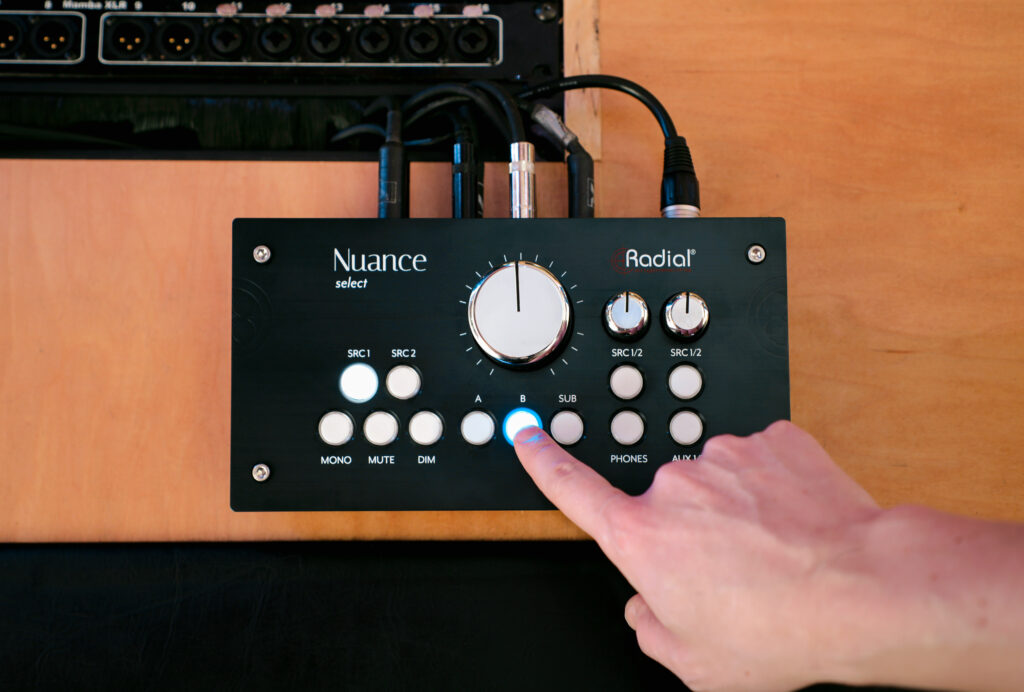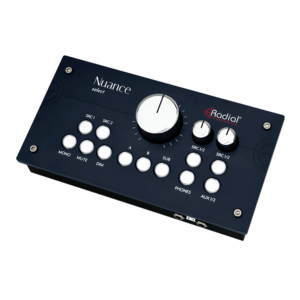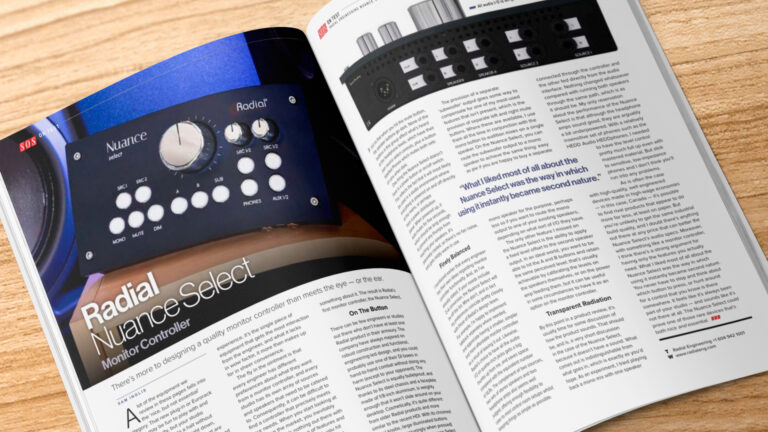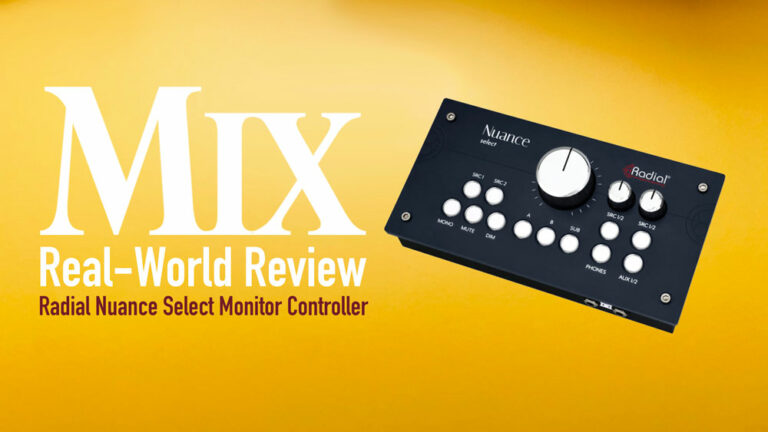The following review by Scott McChane was originally published in the July 2024 Edition of Tape Op Magazine. Read the original review Here.
The Nuance Select is Radial Engineering’s new desktop stereo monitor controller from the bench of their lead designer, W.C. “Hutch” Hutchison (formerly of Manley Labs and Rupert Neve Designs). Radial supplies engineers and performers with utility products that fill a market gap left by other manufacturers – and every once in a while they make something we didn’t know we needed in the first place! There’s not much of a middle class in terms of monitor controllers right now. Many of us are relying on the built-in facilities of our overengineered recording interfaces to manage our playback, or expensive external controllers with 15 functions that do everything but provide transparent, reliable monitoring – everything all at once, and none of it done well. It’s this situation that has led me to review the Nuance Select.
My current single rack space programmable monitor controller is also a summing mixer with a built-in talkback mic. It has performed well for summing over the years but is just okay as a monitor controller. After the first week of use, the stereo field began leaning toward the left speaker – due to a faulty potentiometer – and the power supply PCB connector began coming loose. I got tired of fighting with it; it turned out my Universal Apollo 8 was better at managing playback. Though I may keep my old controller in the rack as a summer, I now needed a solid, simple, discrete external monitor controller to run two sets of mains and a single subwoofer. Another staple of Radial’s brand is building products that do one thing really well, so I was excited to try the Nuance Select in my space.
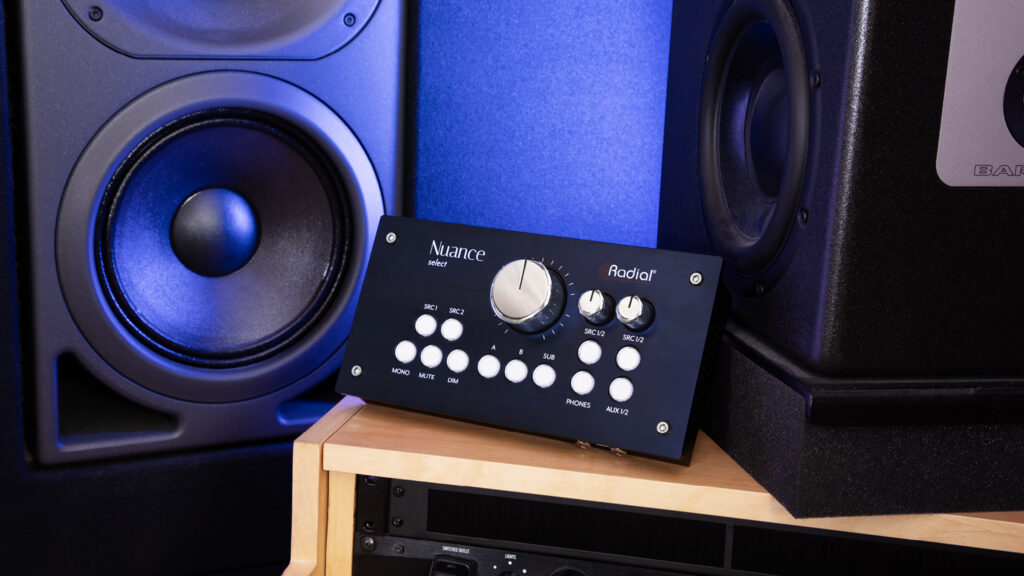
Nuance Select is wrapped in a dark blue ten-inch wide, five-inch deep, and two-and-a-half-inch tall heavy-duty vented steel casing with a sloped aluminum control panel. Primary controls include a large level knob, lighted button switches for input source selection (SRC 1/2), Mono, Mute, Dim (-15 dB), speaker selection (A or B), and Sub. The level knob is a 21-position stepped analog attenuator with super-accurate level matching (within 0.1 dB) between left and right fields – thank you! Note to those using your interface as a monitor controller: It’s a safe bet your box is using an inexpensive analog potentiometer (like my controller has) that will eventually begin to drift. The level control feels light to the touch with just the right amount of resistance between steps and is easy to grab (approximately two inches wide by one inch tall) without having to move your head away from the mix position. Separate level controls and lighted SRC 1/2 (source) select switches are provided for two independent 1/4-inch headphone jacks located on the front panel of the Nuance Select’s chassis. A Phones button activates/deactivates all headphones, and an Aux select switch toggles between SRC 1/2 and feeds an unbalanced stereo TRS output on the rear (for extra headphone amps or such). The external power supply connects firmly to the rear of the Nuance Select’s steel chassis via a 4-pin XLR. Circuits within the controller provide extra filtering of the incoming power, further lowering the noise floor while improving load regulation. Physically, there’s absolutely no way this cable will come loose like my existing controller!
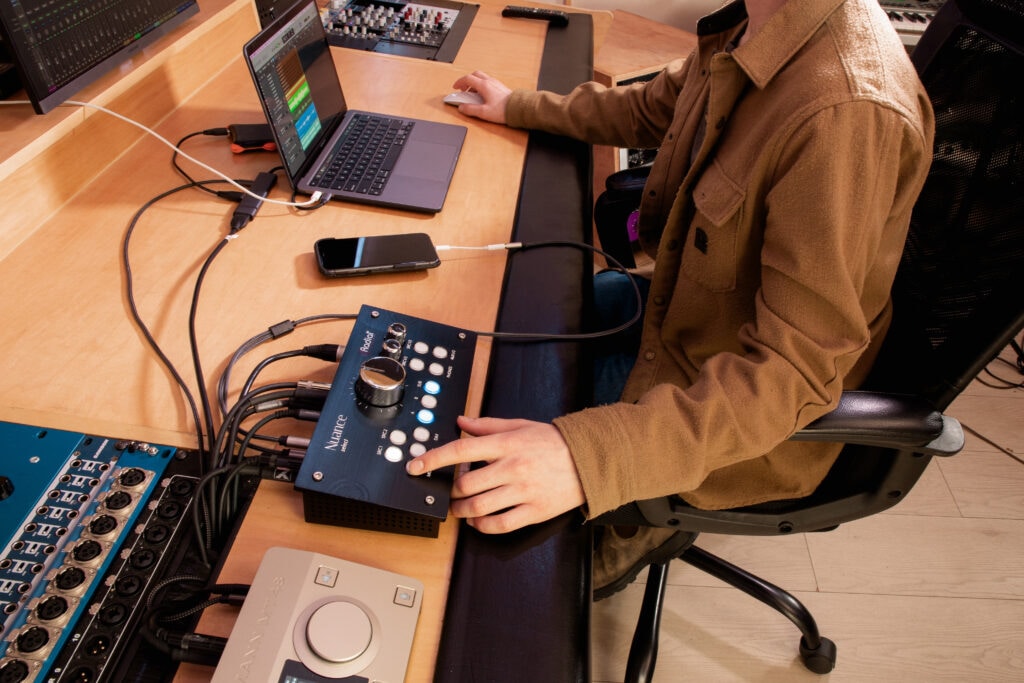
The Nuance Select is an all-analog controller with interfacing achieved exclusively via 1/4-inch TRS jacks: Besides the aforementioned Aux output, all I/O is balanced, with two sets of stereo speaker outputs, two stereo source inputs, and one mono Sub output. The headphone jacks are also 1/4-inch TRS. These days, I prefer the 1/8-inch jacks; almost every professional headphone cable has a 1/8-inch connector now, so you’ll need to find those adapters. I leave them plugged into the jacks so they won’t get lost.
My sub has an integrated crossover. This means if you don’t have a dedicated sub output, like my existing controller (again!), you can send the monitor outputs through the sub to your main speakers. In most cases this can be a convenient sonic compromise, but it adds more filters and circuitry in the path to your main monitors – and could be introducing distortion. The Nuance Select is Class A throughout, with no capacitors in the audio signal path. I am fully stoked that the Nuance Select gives me the on/off Sub switch. My room isn’t awesomely studio-perfect, which makes calibration problematic – it’s a must for me to be able to cut the sub occasionally. On paper, before actually plugging it in, the Nuance Select seemed like the answer to all of my problems. I had to check how it sounds.
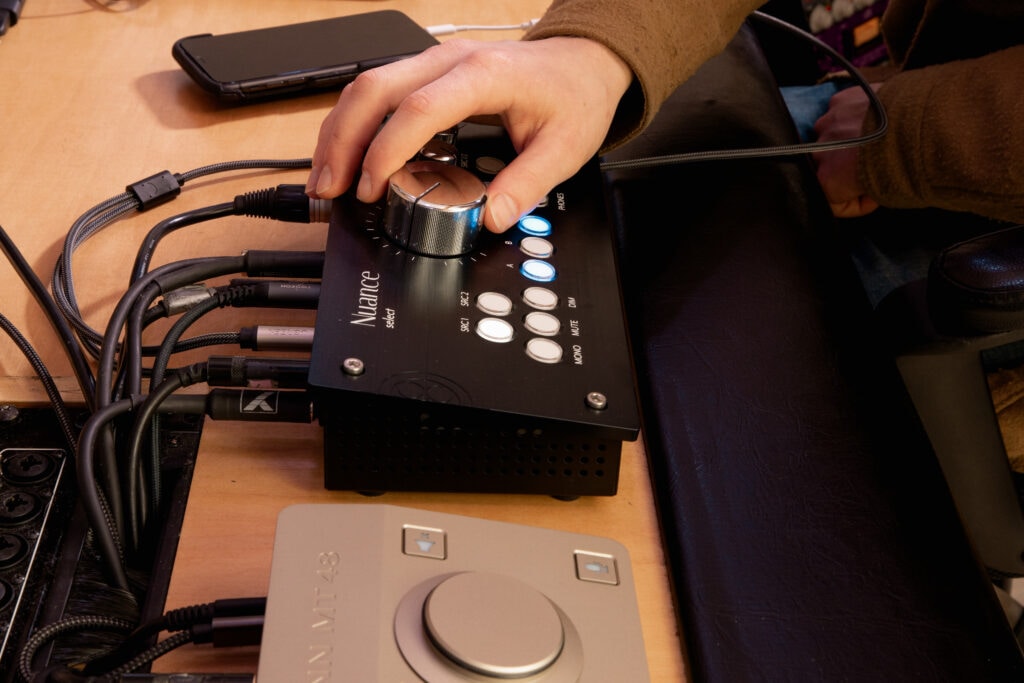
Though there is no power switch, like most monitor controllers the Mute button is engaged when powered up. Immediately upon playback without the sub, my old Focal Alpha 65 monitors on output A returned to life, sounding almost brand new again, with a refreshing dynamic and balanced low end response. On speaker output B, my Auratone 5C Super Sound Cubes felt like, well, Auratones, but were definitely more focused and less cloudy. I was excited to jump right into a mix, so I quickly calibrated my sub by ear. I switched between some of my favorite old mixes and tracks I’d recently worked on. The room sounded like I’d pulled sweaters off the monitors – so clear and uncluttered in the stereo field. My reactions ranged from anger (at my old monitor controller) through acceptance (“It’s too late to remix that track now”), enjoyment (“I can’t wait to work on a new mix!”), and finally, trust. For the first time in my newest space, I felt comfortable and confident with my choices because of the Nuance Select’s transparency. The second analog stereo input allows me to quickly plug in my laptop setup with a portable interface or a synth for instant playback without having to boot up my entire studio rig. The headphone outputs are impressive. Though headphone monitoring features may mirror most newer recording interfaces, the quality is several notches higher, no doubt due to its Class A circuitry throughout the headphone path, almost rivaling my Little Labs Monotor.
The Nuance Select isn’t built to get you through an immersive mix, and it doesn’t have a talkback feature. However, it does follow Radial’s ethos of serving one purpose really, really well, and definitely performs at a level above its price point. Our workflows change, but the integral pieces are used repeatedly. I can see this controller outlasting my current recording interface, monitors, and at least two more desktop computers. It comes with a three-year transferrable warranty, so I know it’s built to last. For my money (I ended up buying it), it’s all pros and zero cons with the Nuance Select.



